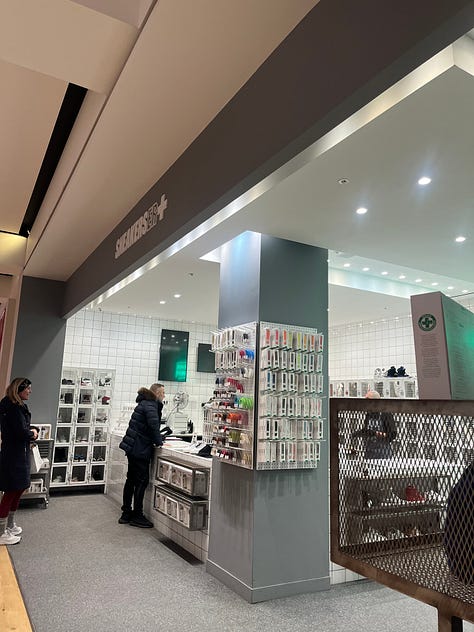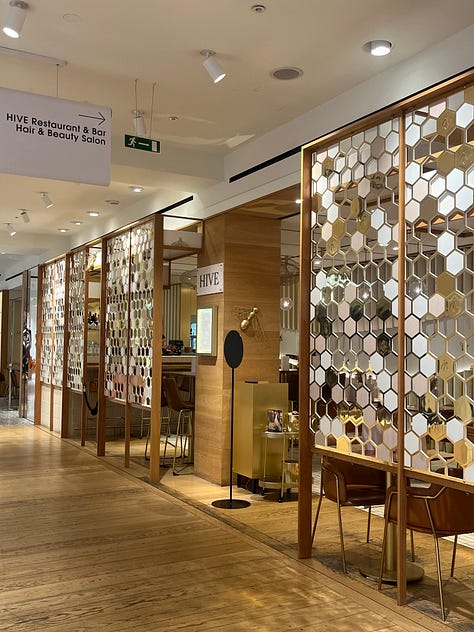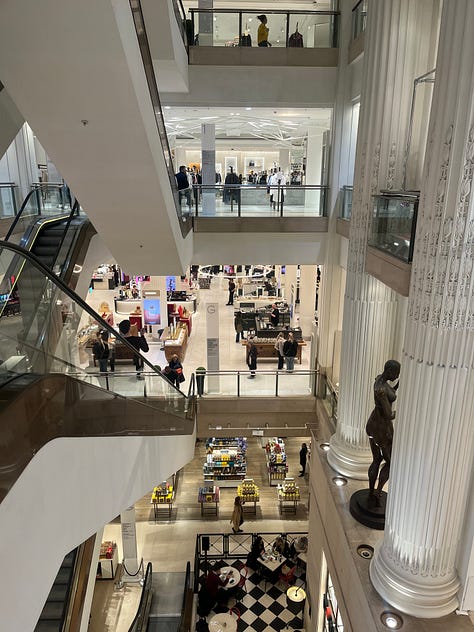Retail Lab: Bringing Back The Joy of Department Store Shopping
Department stores have been struggling, but in this week’s Retail Lab, I take a look at why we shouldn’t underestimate their power to supercharge the customer’s shopping experience and drive sales.
It’s safe to say that it’s been a tough few years for department stores. The pandemic shifted consumer spending to online and changed shopping habits overnight, leaving department stores paralysed with empty shops and overflowing shelves. Anyone expecting this to be a temporary change has been left disappointed as customers in the post-Covid landscape search for more innovation and connection in the way they shop.
Department stores are operationally complex, making it difficult for them to implement change quickly, and leaving them open to feeling stale compared to other more nimble retailers. It’s why the likes of John Lewis, Debenhams, House of Fraser, Bloomingdales, Nordstrom, and Macy’s all seemed to lose their way; of course, some slowly found their way back to profitability, while others couldn’t.
Despite the challenges, I think department stores can still deliver for shareholders and customers because of one key factor: discoverability. It’s a huge part of shopping, and nowhere can offer the surprise and delight factor that department stores are known for; if retailers get it right, sales and profit will follow.
What went wrong with department stores?
Department stores are logistically hard to manage. With so many brands on sale, vast amounts of product in the warehouse and large retail spaces to manage, the challenges are huge. Couple this with high customer expectations, and you can see why so many struggle.
Here are some reasons why I think the sector took such a hit:
Too much product and not enough focus made the shopping experience difficult for customers at a time when many are looking for ease and simplicity;
Messy shop floors often became the norm as department stores cut staff, which created a chaotic and confusing customer experience;
It’s hard to blend a cohesive visual merchandising strategy with the variety that a department store needs, leading to fragmented displays;
Visuals were neglected in favour of stocking vast amounts of product, leading to messy displays and disoriented customers who had no one to turn to for advice;
The online threat was there before the pandemic, but the stay at home message rapidly shifted customer spending to e-commerce;
The shopping experience didn’t match customer expectations because somewhere along the way, department stores forgot that customers don’t just want to buy, they want to experience shopping as a leisure activity. This required long-term planning and investment.
Compound all of these factors and it’s clear that department stores became expensive showrooms instead of hubs of social activity and discovery.
But change is on the horizon.
John Lewis is back to profitability, Printemps is expanding to the US and Selfridges is back to its best. So what’s changed?
Busy lives and product overload mean we’re more drawn than ever to curated selections of the best in one place, which is why we’re seeing “Edits” everywhere, and they work best in a department store format;
Department stores are uniquely placed to find the newest brands and welcome them in, giving them a place to test their products in exchange for the marketing buzz that comes with stocking a trending brand;
The best brands now are the ones that build community (just look at REFY). Activations, pop ups, branded cafés serving food and drinks, and exclusive events are drawing customers in, and what better place to host these than in iconic department store spaces purpose-built and designed for blending large-scale events and shopping?
I saw this first-hand in Selfridges.
Here’s what I loved.
The beauty hall was a pleasure to peruse and staff were happy to offer advice and recommendations;
I discovered new brands and rediscovered old favourites as I took the time to walk through the store (SKIMS, Vuori, and Westman Atelier were my highlights);
Sneakers ER where customers can get shoes cleaned and repaired to a professional standard;
The Hive Restaurant blends seamlessly in to the store, giving customers the perfect opportunity to recharge during a shopping trip;
The buzz of shopping in a busy hub that was filled with great products, tidy displays and store exclusives was inspiring and exciting.



What does the future look like?
Here are some opportunities I see for department stores.
Offer more than the product by making department stores interactive and a destination for experiences rather than just shopping;
Offer free samples, makeovers, and styling appointments to build trust and community;
Do what Amazon can’t do by offering top-tier customer service and demonstrations;
Create an experience by incorporating food, beauty treatments and exercise classes in to the floor space;
Have a dedicated space for pop-ups to test new brands and products, and drive footfall;
Open smaller outlets in addition to larger ones in key locations to build an accessible store network;
Stock brands that aren’t easily available elsewhere in the country or online;
Enable customers to check stock online and have virtual try ons and consultations because eCommerce should complement what’s in store to create a seamless customer experience.
Let’s wrap things up.
Successful department stores should be the destination for discovery and delight; modern customers want both in equal measure.
As experiential retail becomes more commonplace, department stores are perfectly placed to play host; underestimate the power of IRL shopping at your peril.



